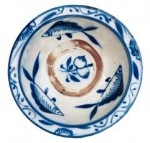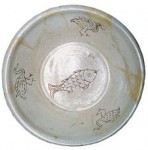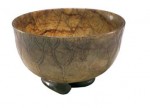Eating, the Chinese Way
China not only has a wide variety of cuisines and exotic fare in all its regions,  even ordinary homemade cooking for three meals a day can provide for plentiful unique recipes. The Chinese stress the aesthetics of food, the refinement of dining ware, and the elegance of dining environment, so having food is a daily enjoyment. Eating, as a branch of learning and art form, not only gave birth to rich and excellent culinary techniques, also reflects the Chinese’s content and joyful nature.
even ordinary homemade cooking for three meals a day can provide for plentiful unique recipes. The Chinese stress the aesthetics of food, the refinement of dining ware, and the elegance of dining environment, so having food is a daily enjoyment. Eating, as a branch of learning and art form, not only gave birth to rich and excellent culinary techniques, also reflects the Chinese’s content and joyful nature.
The Chinese have had a regular dining discipline since long ago. First it was a two-meals-a-day practice. The first meal, called zhao shi (morning food), is usually had around nine-o’clock in the morning. The second meal, bu shi, is had around four in the afternoon. The Chinese sage Confucius says that “bu shi bu shi,” which translates to “meals are not to be had if it is not the appropriate time,” meaning to emphasize the punctuality of meals. At around the Han Dynasty (206 B.C.-220 A.D.), with better development of agriculture, people of every nationality group and region slowly began to adopt the “breakfast, lunch and dinner” practice. Only their dinners were had much earlier than modern men, as they believed “work starts with the break of dawn and rest is to be taken when the sun goes down.” Three meals of the day must be prepared and eaten fresh, a way of showing the Chinese’s crave and love for food. In recent years, the pace of life for urban Chinese is getting faster and faster. Dining out is becoming more and more common, especially for lunch. Most office professionals dine at nearby restaurants, or in cafeterias of schools and work units. As for dinner, female heads of households are usually very attentive in its preparation.
Symbols of Visual Objects
The art form of Chinese folk art is the visual image of the objects in the  universe, according to the original Chinese philosophy.
universe, according to the original Chinese philosophy.
In primitive society, human was on the weak side in the struggle against natural disasters. Animals with superman capability became supernatural or totem animals in the eyes of humans, for example, polygenetic animals like fish, toad and frog were regarded as female totem symbols from mother’s body of earth and water; animals that were difficult to conquer such as snake, tiger, ox, boar, bear, or with special capability such as flying birds and butterflies; or that ran fast on mountain peaks and precipices like antelope; were male totem symbols, same as the sky and the sun. Over the course of several thousand years, these symbols have been, and still are, used by people of various national background and geographical areas in their respective regional folk art.
In the prairie areas of northern China, the deer totem symbol worshipped by the people in remote antiquity is still a symbol in today’s folk art of the prairie culture; and the pig and the dragon totem from Hongshan culture originated in primitive society in Liaohe basin are still the upper stream  Yangtze River. Regional totem symbols still prevail in today’s folk art.
Yangtze River. Regional totem symbols still prevail in today’s folk art.
In ancient China, people connected natural animals with the sky and earth, and with the theory of yin-yang. Animals in the yang group symbolized the sky and the sun. The unification of “yang” animal from the sky with “yin” animals of earth meant a connection of the sky and earth, or the unity of yinyang. Among Chinese totem animals and legendary animals, the tiger, the ox, the goat, the bird, the bear, the boar, the dog and the cock were of the sky and yang group; the dragon, the snake, the turtle, the fish and the frog were yin group and symbols of earth and water. The dragon, with his head on earth but mating in heaven, was a totem of both worlds (Dragon was originally earth and water animal, but later went to heaven to become the king, and phoenix, an animal in heaven was the queen.) This is rather unique. For example, dragon, being an earth and water totem symbol, later became a cultural symbol of the entire nation in the confluence of multiple national cultures. People integrated the dragon into their own totem animal which turned into the dragon with a boar head in Liaohe basin; or the dragon with a tiger head in the middle-upper stream of the Yellow River; the dragon with a bird head in middle-lower stream of the Yellow River and the Yangtze River; and the dragon with an ox head in middle-upper stream of the Yangtze River. It is also quite common to see “fish with a tiger head” or “fish with a cock head” in Chinese folk art. When two animals are combined into one, it was a cultural symbol that  heaven and earth connect, male and female mate. Other example like “cock holding a fish in the mouth” and “bird holding a fish in the mouth” also implied the connection of heaven and earth, yin and yang. It was a cultural code originated in the communal philosophy in primitive society.
heaven and earth connect, male and female mate. Other example like “cock holding a fish in the mouth” and “bird holding a fish in the mouth” also implied the connection of heaven and earth, yin and yang. It was a cultural code originated in the communal philosophy in primitive society.
Prehistory pottery later than those of the Yangshao culture
It was unearthed at Aohan Banner (county), Inner Mongolia Autonomous Region.”
Archeologists have also found whole arrays of primitive pottery utensils as old as those of the Yangshao culture or produced later. These belong, separately, to the Hongshan culture of northeast China, Dawenkou culture of Shandong Province, Majiayao culture of northwest China and Qijia and Xindian culture that came later, Daxi and the Qujialing cultures of southern China, and the Yunshishan culture prevalent in coastal areas of southeast China.
Even places like Xinjiang and Tibet are home to prehistory ruins from where painted pottery utensils have been excavated. A limited number of painted pottery utensils have been found in some prehistory sites in Taiwan Province, including Dawenkeng at Taibei and Fengbitou at Gaoxiong. These are seen as material evidence to contacts between prehistory Chinese on either side of the Taiwan Strait.
Tools of the Cooking
 Humans evolved from the primitives, who plucked the hairs and feathers from animals and drank blood, into intelligent and skillful beings that can make today’s gourmet foods. Gone were the days of seizing food with bare hands, people now dine with chopsticks, knives, forks and spoons. Apparently, changes in the ways of eating and dining utensils can reflect the path of human evolution, from a primitive state to modern men. The cooking and dining utensils of the Chinese have an inseparable connection with their culinary techniques and dietary habits. Today, people can learn about history through artifacts and a written language that were passed down through the generations. Chinese dining ware has gone through changes in material, from stone and pottery to bronze, iron and other metals. The one form of “made in China” product that is well known throughout the world is porcelain, or fine china. As productivity levels heightened, dining utensils not only
Humans evolved from the primitives, who plucked the hairs and feathers from animals and drank blood, into intelligent and skillful beings that can make today’s gourmet foods. Gone were the days of seizing food with bare hands, people now dine with chopsticks, knives, forks and spoons. Apparently, changes in the ways of eating and dining utensils can reflect the path of human evolution, from a primitive state to modern men. The cooking and dining utensils of the Chinese have an inseparable connection with their culinary techniques and dietary habits. Today, people can learn about history through artifacts and a written language that were passed down through the generations. Chinese dining ware has gone through changes in material, from stone and pottery to bronze, iron and other metals. The one form of “made in China” product that is well known throughout the world is porcelain, or fine china. As productivity levels heightened, dining utensils not only  underwent changes in material and craftsmanship, but also a typical change from large to small, rough to delicate, and thick to thin.
underwent changes in material and craftsmanship, but also a typical change from large to small, rough to delicate, and thick to thin.
The earliest cooking utensils included earthenware ding, li, huo, zeng, yan and more. Later came more elegant and larger successors to these utensils with the same names, but made from bronze and iron. Some of these cooking utensils doubled as vessels for food, such as the ding that was used to both cook and hold meat. Usually large in size, the ding is usually round in shape and has three pedestals for support; certain ones are square with four pedestals. Between the pedestals, firewood and fuel can be placed for direct burning and heating. On either side of the upper exterior of the ding is a handle for easy carrying. In the Bronze Age, the function of the ding changed as some were used as important tools in sacrificial rites. Li is used for cooking porridge (congee). It is similar in shape to the ding but smaller in size. Its three pedestals are hollowed and connect to the belly. The food in the hollowed legs therefore can be heated and cooked more quickly. Huo is specially used for cooking meats, and is more advanced than the ding. It has a round belly but no feet, more akin to the “wok,” which came at a later time. The zeng is used for steaming food. Its mouth folds outward and has handles. The bottom is flat with many apertures for the passage of steam. Some zengs have no bottom, but instead has a grating underneath. When in use, the zeng is placed over the li, a cooking tripod filled with water. What merged the zeng and li together is the yan. The Chinese have had earthenware zeng since the late Neolithic Age. After the Shang Dynasty (around 17th to 11th century B.C.), there appeared zengs made of bronze.